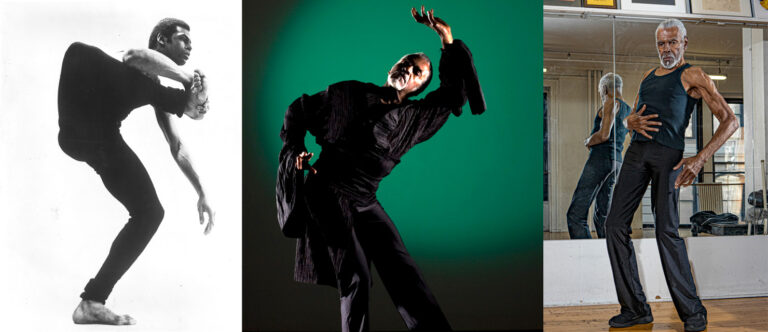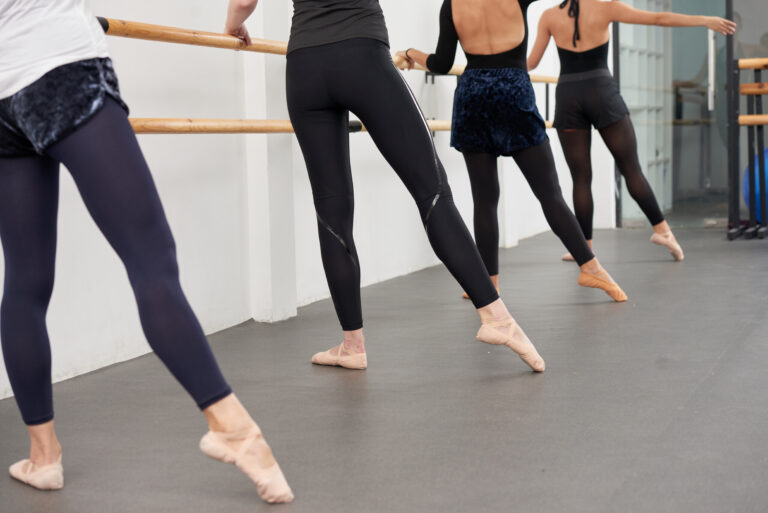
A qualified personal trainer can help create a workout regimen that meets your body and classroom needs.As a teacher, you already know you need to look outside the studio for regular workouts. If you’ve trained primarily as a dancer, however, establishing a gym routine beyond using aerobic machines can be intimidating. It’s tough to know where to begin.
Lauren McIntyre, an athletic trainer and clinical specialist at the Harkness Center for Dance Injuries at NYU Langone Medical Center, recommends personal training sessions to many of her patients. A well-qualified personal trainer—whether they have a dance background or not—can help customize and streamline your strength and cardio workout to suit your body, as well as your classroom (and dance!) needs. You may discover new levels of strength, energy and even flexibility in the process.
Here are McIntyre’s best tips for spotting a good trainer, communicating your needs and banishing your biases about dancers and weight lifting.
Focus on their certification along with their dance background.
There are various certifications that personal trainers can get. Having one doesn’t guarantee they’ll be a good fit for you, and not having one doesn’t mean they won’t know their stuff, but McIntyre says good education will prepare a trainer to work with anyone, including dance teachers. A few certifications she trusts are those from the American College of Sports Medicine (ACSM) and the National Academy of Sports Medicine (NASM), or if someone is a Certified Strength and Conditioning Specialist (CSCS).
Discuss goals.
Before the first session, you and your trainer should sit down and talk about why you’re there. A good trainer will customize your program accordingly. (If they don’t, find a new one.) If your goal is to gain more power for demonstrating jumps, for example, McIntyre says you may do plyometrics and some heavier leg strengthening than if your goal is to improve your cardio endurance, in which case you might spend more time on aerobic equipment or doing interval training on the bike or rowing machine.
Show them what you do.
If your trainer isn’t familiar with dance, or if they only know New York City Ballet or “So You Think You Can Dance,” consider showing them a video of one of your classes in action. Explain how you move as a teacher; tell them what kind of combinations you demonstrate and which you don’t (and maybe which you’d like to). Share information—like how you warm up, that you often need to leap into action from a standstill, and that you might only get to do one side of a combo. A good trainer can customize a program to suit your needs.
Tell them about prior injuries.
Let your trainer know which injuries you’ve had or areas that have been bothering you lately, not because they should be diagnosing or treating you, but so they can avoid aggravating a sensitive area. They may even want to give you strength work that will prevent a recurrence. “If you’ve had multiple ankle sprains, maybe they would tailor your program to work on balance and core and hip stability,” McIntyre says.
Share your work schedule.
Like dancers’, teachers’ schedules ebb and flow. As a recital approaches, you’ll likely find yourself on your feet all day every day in classes and rehearsals. When the physical demands of your schedule get more intense, your gym regimen may need to be scaled back. And the opposite applies to slower times. “If you have periods where dance volume is low, that’s a great chance for them to up your cross-training and make it more challenging,” McIntyre says. They shouldn’t give you a strength-training program and ask you to do it three times a week, no matter what. A good trainer can take your changing schedule into account and adjust your routine accordingly.
Let go of the flexibility vs. strength myth.
As a dance teacher, flexibility is important. But don’t worry: You won’t lose your bendiness that easily. McIntyre points to the ACSM guidelines that suggest developing three types of fitness: aerobic, strength and flexibility. Dancers are quite flexible and practiced in short bursts of aerobic activity. Adding some strength training and cardiorespiratory exercise can give you better stamina in the studio. Plus, muscle tightness can be caused by weakness, so developing more strength could actually allow some muscles to release. That said, McIntyre adds, any personal training session should start with a dynamic warm-up and end with a cooldown.
Plan to be sore.
You’re going to get sore, and it’s not a bad thing. “We know that in order to make gains, the training must load the body with more than what is normal,” McIntyre says, explaining an exercise principle called progressive overload. Weights shouldn’t be so heavy that you can’t perform the moves the trainer asks you to do. You’ll get frustrated or, worse, injured. It should be tough, but doable. And afterward, you’re going to feel it. Expect acute soreness for a few hours after the session, followed by delayed-onset soreness within the next 72 hours. There’s not much you can do about soreness, McIntyre says (which is different from muscle tension or tightness and can’t be massaged away), but make sure your muscles are well-fueled for recovery with protein and carbohydrates. And don’t schedule a workout right before recital weekend.
Let your trainer do their job.
Don’t try to do kettle-bell goblet squats like a ballerina. Strength training is not dance, and you’re not the instructor this time. Once you are confident in your trainer’s qualifications and their understanding of your goals, injuries and concerns, you need to trust them. “You know dance, you know your body in dance, but you may not know anything about lifting weights,” McIntyre says. It’s almost like you’re a nondancer going to her first ballet class. If you feel confused or nervous about a move, ask. If your instructor is good, they are going to be attentive to your lack of experience and take extra time teaching you the language and making sure your form is correct and safe.




